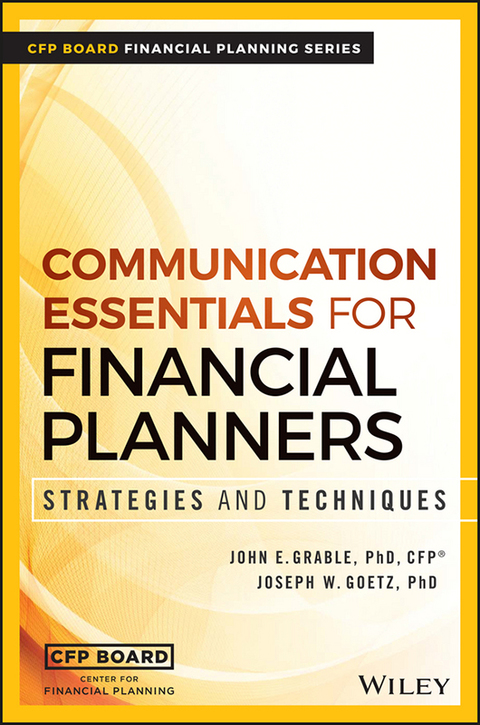Description
Efnisyfirlit
- Preface
- Acknowledgments
- How to Use This Book
- Introduction
- Chapter 1 An Introduction to Applied Communication
- Introduction
- Financial Planning Outcomes
- Communication Defined
- The Theory of Communication
- The Importance of Feedback
- Conclusion
- Summary
- Chapter Applications
- Notes
- Chapter 2 Structuring the Process of Interpersonal Communication
- Introduction
- Social Penetration Theory
- Orientation
- Exploration
- Affective Exchange
- Stable Exchange
- Relationship Benefits and Costs
- Accounting for Stress
- Building Client Trust: An Appreciative Inquiry Example
- Summary
- Chapter Applications
- Notes
- Chapter 3 Structuring the Process of Communication through the Office Environment
- Introduction
- Identifying Target Clientele
- Understanding the Office Environment
- Stress and Communication: Bringing the Pieces Together
- Summary
- Chapter Applications
- Notes
- Chapter 4 Listening Skills
- Paying Attention to the Client
- Attending to What Is Said
- Interpreting What Is Heard
- Transference and Countertransference
- Passive Versus Active Listening and Responding
- Silence: A Stressful Time for Client and Financial Planner
- Responding to “I Don’t Know”
- Summary
- Chapter Applications
- Notes
- Chapter 5 Questioning
- Introduction
- Open-Ended Questions
- Closed-Ended Questions
- Choosing Between Open and Closed-Ended Questions
- Question Transformations
- Swing Questions
- Implied and Projective Questions
- Scaling Questions
- Summary
- Chapter Applications
- Notes
- Chapter 6 Nondirective Communication
- Why Nondirective Communication?
- Outcomes Associated with Nondirective Communication
- Clarification
- Summarization
- Reflection
- Paraphrasing
- Styles of Paraphrasing
- Summary
- Chapter Applications
- Notes
- Chapter 7 Directive Communication
- Direction: The Essence of Financial Planning
- Interpretation
- Reframing
- Explanation
- Advice
- Suggestion
- Urging
- Confrontation
- Ultimatum
- Summary
- Chapter Applications
- Notes
- Chapter 8 Trust, Culture, and Communication Taboos
- Understanding a Client’s Cultural Attributes
- Interpersonal Preference
- Risk Management
- Culture and Trust
- Communication Taboos
- A Cultural Example
- Summary
- Chapter Applications
- Notes
- Chapter 9 Politeness and Sensitivity in Communicating with a Broad Range of Clients
- The Power of Language
- Politeness
- Politeness Through Inclusion Versus Exclusion
- Sensitivity
- Language Sensitivity
- Summary
- Chapter Applications
- Notes
- Chapter 10 Financial Planning—A Sales Perspective
- Sales Models
- The Challenger Model
- The Consultative Model
- Manipulation Versus Persuasion
- Consultative Selling and Compensation
- Understanding Client Behavior
- Dealing with “No”
- The Ethics of Selling
- Summary
- Chapter Applications
- Notes
- Solutions
- About the Authors
- About the Companion Website
- Index
- EULA






Reviews
There are no reviews yet.